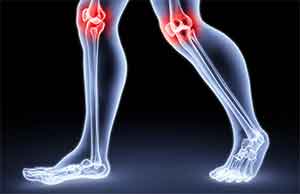“Prehab” Before You Rehab
“Prehab,” Helps Patients Recover Faster from Joint Replacement Surgery
 For people contemplating a hip or knee replacement, the prospect of a long post-surgical recovery can be a daunting one. The grueling rehabilitation sessions, the frustration of re-learning everyday movements, the weeks of waiting to return to “normal”— it’s almost enough to make patients reconsider surgery. Now there is evidence that appropriate pre-surgical physical therapy — or “prehabilitation” — can help patients recover faster.
For people contemplating a hip or knee replacement, the prospect of a long post-surgical recovery can be a daunting one. The grueling rehabilitation sessions, the frustration of re-learning everyday movements, the weeks of waiting to return to “normal”— it’s almost enough to make patients reconsider surgery. Now there is evidence that appropriate pre-surgical physical therapy — or “prehabilitation” — can help patients recover faster.
A recent report in the Journal of Bone & Joint Surgery found that physical therapy before total hip or total knee replacement surgery can help reduce the need for post-operative care by nearly 30 percent, saving an average of $1,215 per patient.
As a way to help patients recover faster and receive better care, The Valley Hospital in Ridgewood, NJ, has begun offering a pre-surgery physical conditioning program to help ease recovery for joint replacement patients. Valley’s “prehab” program helps joint replacement patients start the healing process even before being wheeled in for surgery.
“Prehab can help people return to a healthier, more active life sooner. It’s a great addition to our full scope of joint replacement services,” says Dr. Anthony Delfico, Director of Orthopedic Surgery at Valley.
Best of all, prehab is appropriate for all fitness levels, so anyone can participate. “Based on an initial assessment of current flexibility, range of motion, bilateral strength and functional performance, our exercise physiologists and certified athletic trainers then customize the program to meet individual patients’ needs,” explains Don Tomaszewski, M.S., ATC/L, Director of Valley’s Sports Institute/Medical Fitness/Outpatient Rehabilitation Medicine.
A typical prehab program begins about six weeks before joint surgery and includes cardiovascular conditioning, strengthening of key muscle groups, balance/posture assessment and training, and patient education. With prehab, patients typically experience the following benefits:
• Enhanced muscle strength, which helps not only the affected joint but also the surrounding muscles (which often need to compensate for a lack of full function during recovery).
• Better body mechanics, balance and mobility, which helps patients as they re-learn movements like getting out of bed or climbing stairs.
• Less pain after surgery, which makes physical rehabilitation easier and improves quality of life.
• A fitness boost, including greater stamina, confidence and motivation to recover.
Source Newsroom: Valley Health System
Citations
Journal of Bone & Joint Surgery

